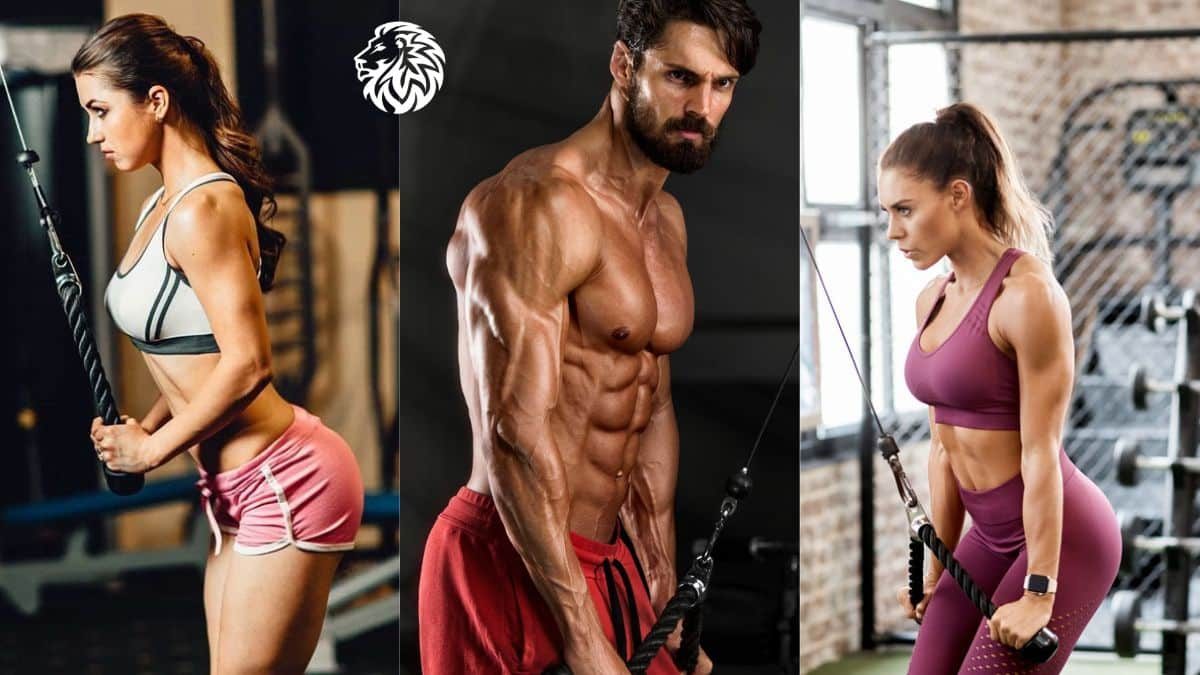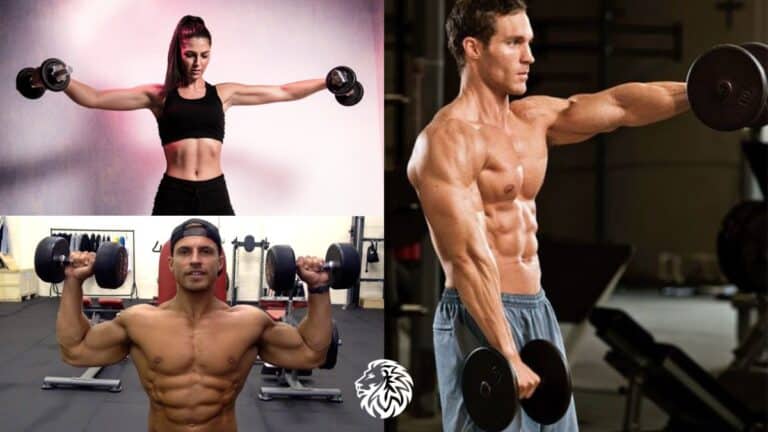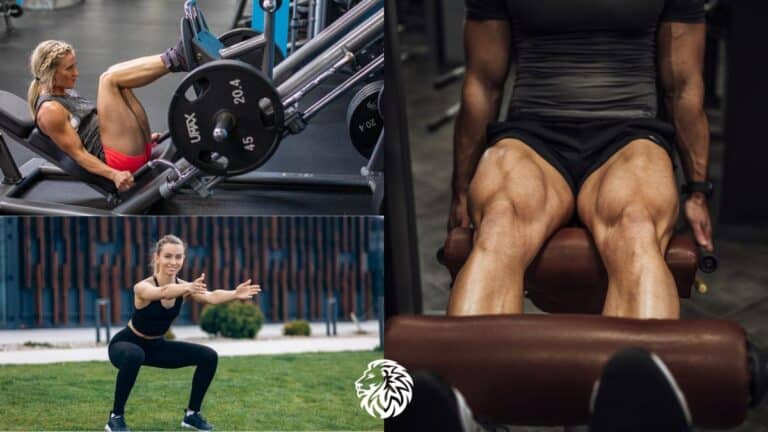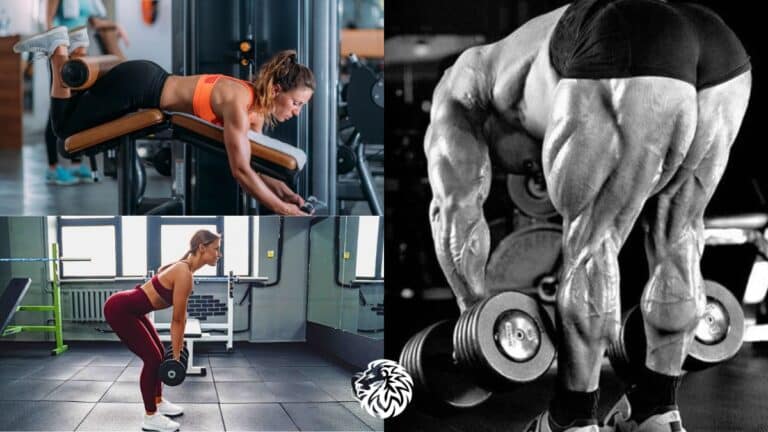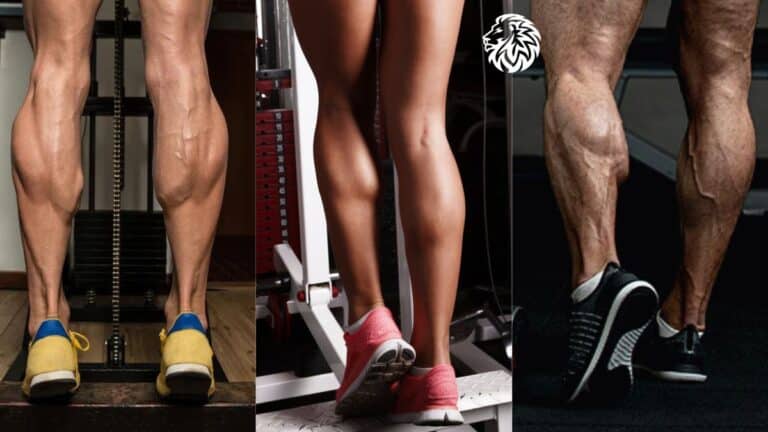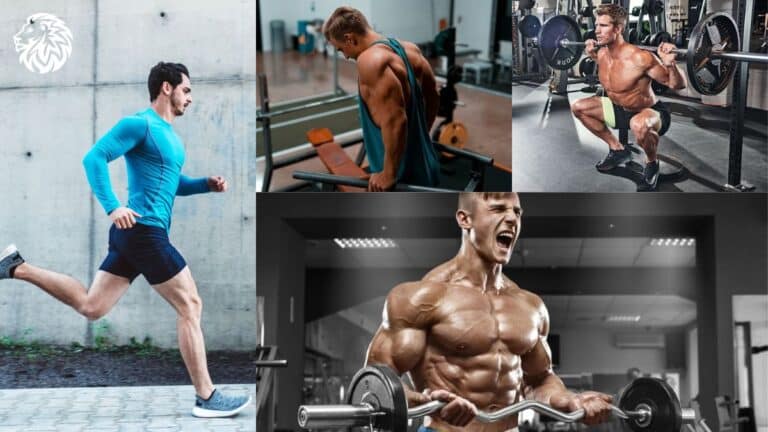Building up those guns isn’t just about flaunting well-sculpted muscles; it’s so much more than a vanity project. Imagine having triceps that not only look awesome but also effortlessly lift, push, and stabilize in your day-to-day activities and favorite sports. Yes, that’s what we’re talking about – power and function wrapped up in one!
The triceps, or to give them their full name, the triceps brachii, sit snugly at the back of your upper arm. With three parts – the lateral, medial, and long heads – this muscle works hard to straighten our arm from a bent position. It’s our trusty assistant in everything from reaching to the top shelf to showing off our throwing skills.
And here’s where the fun begins – sculpting those triceps! Let’s dive into a workout adventure, exploring five fab exercises: Tricep Dips, Skull Crushers, Close-Grip Bench Press, Tricep Kickbacks, and Overhead Tricep Extensions. Whether you’re a workout warrior or a fitness newbie, each of these exercises has something special, helping to develop those triceps from all angles and catering to various fitness adventures and journeys.
But here’s the deal – technique is king. The journey to mighty arms demands that we make every move count. It’s not just about how much you lift or how many times you can do it, but about doing it right to keep those arms safe and happy. Throughout our journey together, we’ll ensure you’re moving in a way that’s kind to your body, ensuring you’re engaging the right muscles and dodging injuries.
Ready to dive deep into the world of tricep training? Remember, your ticket to bolder, stronger arms is a combo of consistent, mindful effort. So, let’s explore, let’s learn, and let’s sculpt arms that not only turn heads but also become your superpower in pushing, pulling, lifting, and simply, powerfully being you! Let’s do this together, crafting arms that are as strong and capable as they are stunning.
Anatomy and Importance of Triceps
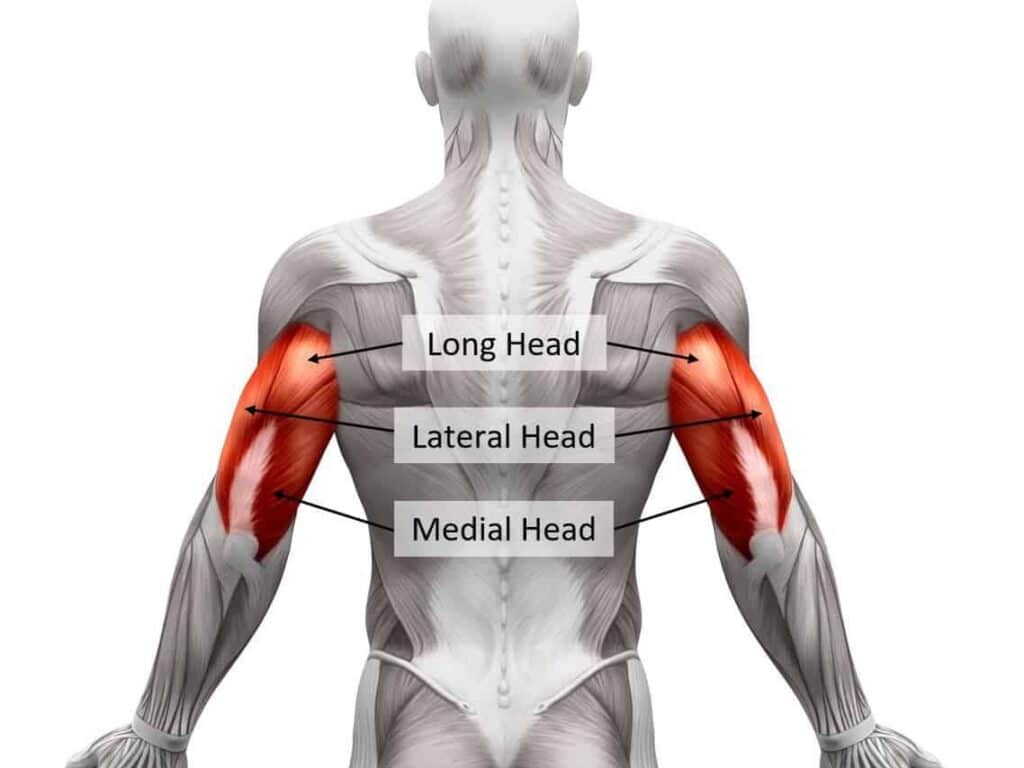
Detailed Description of Tricep Anatomy
The triceps brachii, commonly referred to simply as “the triceps,” is situated at the back of the upper arm, extending from the shoulder blade to the elbow. It is categorized into three distinct heads: the lateral head, which provides the muscle its outwardly curved shape; the medial head, located towards the midline, contributing to thickness and depth; and the long head, which runs down the back of the arm, playing a critical role in both size and function. Each head originates and inserts at different points on the skeleton, allowing them to perform unified yet slightly varied functions, all centralizing around elbow extension and shoulder stabilization.
Role of Triceps in Arm Movement and Overall Physical Functionality
In the broad spectrum of arm movements, the triceps serve an indispensable role in actions that require extending the elbow and stabilizing the shoulder joint. The triceps are the driving force behind any pushing motions, whether that be in athletic pursuits like basketball passes and swim strokes, or daily activities like elevating oneself from a chair or extending to reach an object. In a synergistic function with other muscles, the triceps also assist in stabilizing the shoulder and enabling smooth, coordinated arm movements, thereby underlying their role in maintaining overall upper limb functionality.
Importance in Aesthetical and Practical Aspects
From an aesthetic perspective, well-developed triceps contribute to the overall look of muscular, balanced arms. They provide a counterbalance to the biceps, ensuring that the arms appear proportionate and sculpted from all angles. Furthermore, defined triceps often symbolize strength and fitness, thereby earning a noteworthy mention in the pursuit of a chiseled physique.
In practical terms, robust triceps are paramount in safeguarding the elbow and shoulder joints, particularly during activities that require lifting or pushing movements. A strong tricep group supports joint health, mitigates injury risk, and enhances capacity in both sport-specific and daily functional activities, such as carrying groceries, opening doors, and executing various physical tasks. Thus, tricep strength and development pave the way for not just a powerful appearance but also a physically adept, functional body.
In the subsequent sections, we’ll navigate through specific exercises and principles that cater to developing this vital muscle group, aligning your training with both aesthetic and functional goals. By understanding and applying the anatomical and practical aspects of triceps, your pathway to sculpted, strong arms is distinctly outlined and achievable.
Principles of Effective Tricep Training
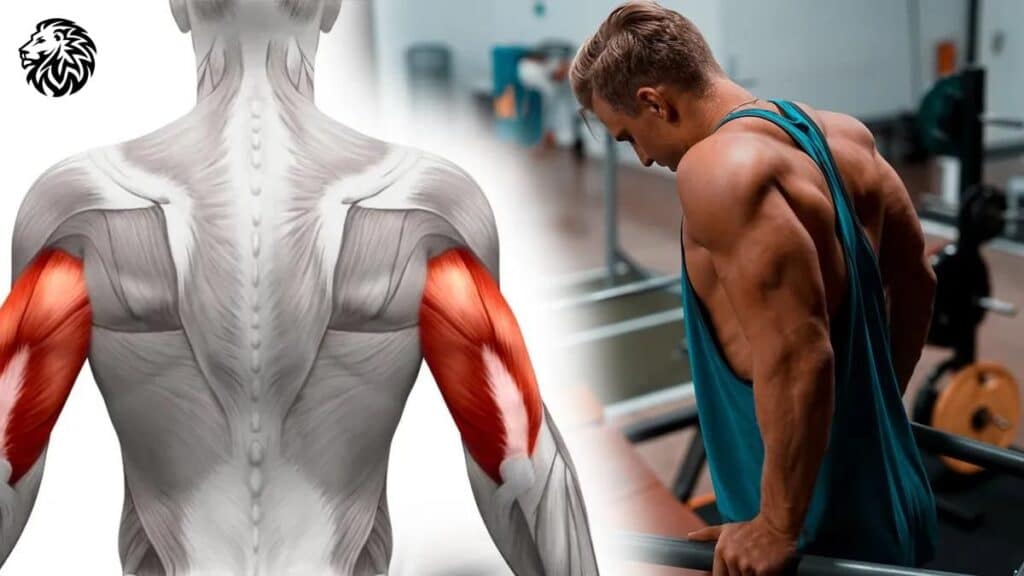
Highlighting the Importance of Consistency and Progressive Overload
Consistency and progressive overload form the bedrock upon which effective tricep training, or any muscle development, is built.
- Consistency involves adhering to a regular, well-structured workout routine that steadily stimulates the triceps, enabling adaptive responses that lead to muscle growth and strength gains.
- Progressive Overload entails systematically increasing the demands on the musculoskeletal system to continually make gains in muscle size, density, and endurance. This can be achieved through augmenting the weight lifted, amplifying the volume of work, varying exercises, or adjusting rest periods between sets and workouts.
By blending consistency with a mindful application of progressive overload, you’ll ensure continuous advancements in your tricep development without plateauing.
Discussion on Incorporating a Mix of Exercise Types
Effective tricep training involves employing a mix of exercise types, each contributing uniquely to muscle development.
- Compound Exercises like the close-grip bench press, engage multiple joints and muscle groups, providing the benefit of stimulating the triceps while concurrently working other muscles. These exercises often allow for heavier weights to be utilized, promoting hypertrophy and strength.
- Isolation Exercises such as tricep kickbacks, target the triceps almost exclusively, ensuring they receive focused tension and stimulation.
Incorporating both exercise types ensures the triceps are worked from various angles and through different modalities, thereby optimizing their development through varied stimuli.
Importance of Proper Nutrition and Recovery in Muscle Building
Building strong, robust triceps is not merely confined to what occurs in the gym. Nutrition and recovery are pivotal in propelling your tricep training into tangible results.
- Nutrition: Adequate protein intake is vital to repair and build muscle tissue post-training. Balancing protein with appropriate portions of carbohydrates and fats ensures energy for workouts and recovery processes.
- Recovery: Allowing ample time between tricep training sessions is crucial to facilitate muscle repair and growth. Implementing recovery practices, such as sleep and potentially, gentle stretching or mobility work, accelerates recovery and mitigates injury risk.
Strategic tricep training melds consistent, progressively overloaded exercises with meticulous attention to nutrition and recovery. This three-pronged approach not only fosters muscle development but also ensures it’s sustainable and aligned with broader fitness and health objectives. In subsequent sections, we will explore specific exercises that, when implemented within these principles, will pave the way for robust, powerful triceps.
5 Best Tricep Exercises
1. Tricep Dips

1. Explanation and Breakdown of the Exercise Technique:
Tricep dips are a classic bodyweight exercise that primarily targets the triceps while also engaging the shoulders and chest. Here’s a step-by-step breakdown of the technique:
- Begin by positioning your hands shoulder-width apart on a stable bench or dip bar.
- Extend your legs forward, keeping a slight bend in the knees if using a bench, or keep them hanging straight down if using parallel bars.
- Lower your body towards the floor, hinging at the elbows until they reach a 90-degree angle, ensuring they track directly backward and don’t flare outward.
- Using your triceps, push your body back up to the starting position, fully extending the elbows at the top without locking them.
2. Benefits to the Triceps and Other Muscle Groups:
Tricep dips are a potent exercise to build upper body strength, particularly in the triceps. Here are some benefits:
- Tricep Strength: Being a compound movement, it effectively targets all three heads of the triceps.
- Shoulder and Chest Engagement: The anterior deltoids and pectoralis muscles are secondarily involved, enhancing shoulder stability and chest strength.
- Core Activation: Maintaining a straight posture during the dips indirectly works your core, improving stability and posture.
3. Variations and Modifications for Different Fitness Levels:
To make tricep dips accessible and challenging for all fitness levels, here are some variations and modifications:
- Bench Dips for Beginners: Placing the feet closer to the body or bending the knees can reduce the difficulty of bench dips, making them more accessible to beginners.
- Assisted Dips: Using resistance bands or an assisted pull-up/dip machine can help alleviate some body weight, enabling you to perform the movement with impeccable form.
- Weighted Dips for Advanced Individuals: Advanced athletes might add a weight belt or place a dumbbell between their ankles to increase resistance, further stimulating muscle growth and strength.
2. Skull Crushers (Lying Tricep Extensions)

1. Step-by-Step Guide on Performing the Exercise Safely:
Skull crushers, also known as lying tricep extensions, are excellent for isolating the triceps. Here’s a breakdown:
- Begin by lying flat on a bench, holding a barbell or EZ curl bar above your chest with hands placed about shoulder-width apart.
- With elbows locked in place and perpendicular to the floor, slowly lower the bar toward your forehead by bending at the elbows.
- Once the bar is near your forehead, push it back to the starting position using your triceps, keeping the elbows stationary.
2. Discussing Targeted Muscle Areas and Accessory Muscles:
- Target Muscle: All three heads of the triceps are engaged, providing comprehensive tricep stimulation.
- Accessory Muscles: While the focus is on the triceps, the forearms, wrists, and shoulder stabilizers are also mildly activated for controlled movement.
3. Providing Alternatives and Adjustments:
- Dumbbell Skull Crushers: For an alternative that allows independent arm movement, use dumbbells instead of a barbell.
- Incline Bench: Performing skull crushers on an incline bench will change the angle and slightly alter muscle engagement.
- Cable Tricep Extensions: Utilizing a cable machine with a bar attachment, perform the exercise while standing to engage the core more.
3. Close-Grip Bench Press

1. Detailing the Form and Execution of the Exercise:
The close-grip bench press is a variant that places more emphasis on the triceps. Let’s explore the execution:
- Lie back on a flat bench, gripping the barbell with hands placed closer than shoulder-width.
- Unrack the bar, holding it straight over your chest with arms fully extended.
- Slowly lower the bar to the mid-chest region, keeping the elbows close to your torso to emphasize tricep involvement.
- Press the bar back to the starting position, focusing on extending through the triceps rather than the chest.
2. Exploring the Impact on Tricep Development and Strength:
- Tricep Engagement: The close grip and elbow positioning engage the triceps significantly, especially during the pressing phase.
- Chest and Shoulder Involvement: The pectorals and anterior deltoids still play a role, making it a compound movement with excellent muscle engagement.
3. Tips on Avoiding Common Mistakes and Injuries:
- Elbow Positioning: Ensure elbows remain close to the body to protect the shoulder joint and focus tension on the triceps.
- Wrist Alignment: Maintain a neutral wrist position to avoid strain and ensure safe lifting practices.
- Bar Path: Aim to lower the bar to the mid-chest, not the upper chest, to optimize tricep engagement and reduce shoulder stress.
4. Tricep Kickbacks
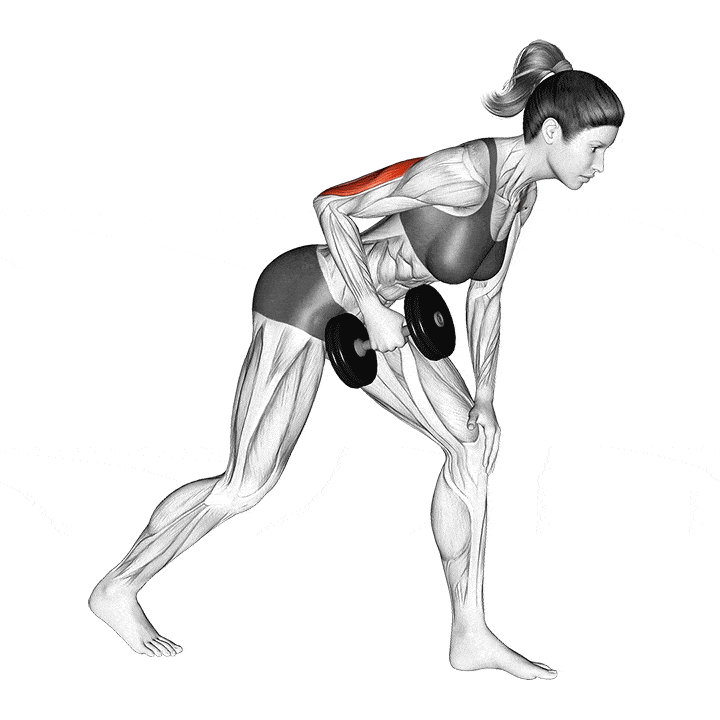
1. Instruction on Proper Form and Movement Pattern:
Tricep kickbacks provide targeted isolation to the triceps when executed with precise form:
- Start by holding a dumbbell in one hand, hinging forward at the hips, and keeping a slight bend in the knees.
- With the elbow at a 90-degree angle, and upper arm parallel to the floor, extend the dumbbell straight back by engaging the triceps.
- Slowly return the dumbbell to the starting position, maintaining control and keeping the upper arm stable and stationary throughout.
2. Spotlight on its Effectiveness in Isolating the Triceps:
- Isolation Prowess: The stable upper arm and focused elbow extension isolates the triceps, ensuring targeted stimulation and growth.
- Versatility: Suitable for various fitness levels and easily adjustable weight make it a versatile addition to any routine.
3. Suggestions for Incorporating it into Workout Routines:
- Superset Strategy: Pair kickbacks with a compound move like close-grip bench presses for intensive tricep work.
- End-of-Session Burnout: Utilize lighter weights for higher reps at the end of your workout to thoroughly fatigue the triceps.
5. Overhead Tricep Extensions

1. Explanation of Exercise Setup and Movement:
Overhead tricep extensions can be performed seated or standing and target the triceps effectively:
- Hold a dumbbell or EZ bar above your head with arms fully extended, ensuring elbows are pointing forward.
- Keeping the upper arms stationary, lower the weight behind your head by bending at the elbows.
- Contract the triceps to extend your arms back to the starting position, ensuring a controlled movement throughout.
2. Insight into How it Targets Different Parts of the Triceps:
- Long Head Focus: The overhead position particularly emphasizes the long head of the triceps, promoting balanced development.
- Comprehensive Engagement: While the long head is emphasized, all three heads of the triceps are actively engaged throughout the movement.
3. Adjustments for Varying Weight Types and Fitness Levels:
- Dumbbell, Barbell, or Cable: The exercise can be performed with various weight types to modify the resistance curve and muscle engagement.
- Single-Arm Variation: Performing the exercise one arm at a time can allow for focused engagement and address any muscular imbalances.
- Seated or Standing: Choose between a seated or standing position based on comfort and preference, keeping in mind that standing will engage the core more.
In summary, combining these five exercises – tricep dips, skull crushers, close-grip bench press, tricep kickbacks, and overhead tricep extensions – within your arm training regimen will provide a well-rounded approach to tricep development. This targeted selection ensures varied stimulation, promoting comprehensive growth and strength in your triceps and contributing to the overall aesthetics and functionality of your arms. Always prioritize form and controlled movements to maximize efficacy and minimize injury risk.
Incorporating Tricep Exercises into a Workout Routine

Crafting a Balanced Routine: Combining Tricep Exercises with Other Muscle Group Workouts
- Complementary Muscle Work:
- Integrating exercises for complementary muscles, such as the biceps, shoulders, and chest, ensures a well-rounded upper body routine that maintains muscular balance.
- Understanding the principle of antagonistic muscles: Working on triceps should be balanced with bicep exercises to ensure stability around the elbow joint.
- Total Body Approach:
- Embed tricep exercises within a total-body workout to maximize metabolic demands and enhance overall functional capacity.
- Utilize compound movements like push-ups or bench presses, which engage the triceps while also working other muscle groups, for efficiency and balanced development.
Scheduling: Ensuring Optimal Rest and Recovery Between Tricep-Focused Sessions
- Rest Intervals:
- Allowing at least 48 hours between sessions that work the same muscle group to permit adequate recovery and promote muscle growth.
- Factoring in the principle of “active rest”: Engaging in light, non-strenuous activities or focusing on different muscle groups on consecutive days.
- Strategic Planning:
- Consider the demands of tricep exercises when planning your workout schedule, ensuring they are not overtaxed by consecutive sessions targeting the same muscle regions.
Volume and Intensity: Striking the Right Balance for Muscle Growth Without Overtraining
- Volume Considerations:
- Adhering to a structured plan that systematically progresses in volume, whether through increased sets, reps, or load, to spur tricep development without veering into overtraining.
- Varying volume within a periodized plan, alternating between periods of higher and lower volume, to manage workload and recovery.
- Intensity Management:
- Alternating between high-intensity and low-intensity sessions or weeks to allow the triceps to recover while maintaining a training stimulus.
- Employing techniques like drop sets or supersets judiciously to augment intensity without unduly amplifying the risk of overtraining or injury.
- Adaptation and Adjustment:
- Continually assess and adjust volume and intensity based on individual responses to the training stimulus, ensuring continual progression without stagnation or regression.
- Pay attention to signals of fatigue, soreness, or diminished performance as indicators to modify the training plan proactively.
By thoughtfully weaving tricep exercises into a well-structured workout routine that honors the principles of balance, recovery, volume, and intensity, you pave the way for sustainable muscle development that enhances both the form and function of your arms within the context of total body health and fitness. This strategic approach ensures that your triceps are developed in a manner that complements overall bodily aesthetics and performance, securing their role in a harmoniously fit physique.
Additional Tips for Tricep Development
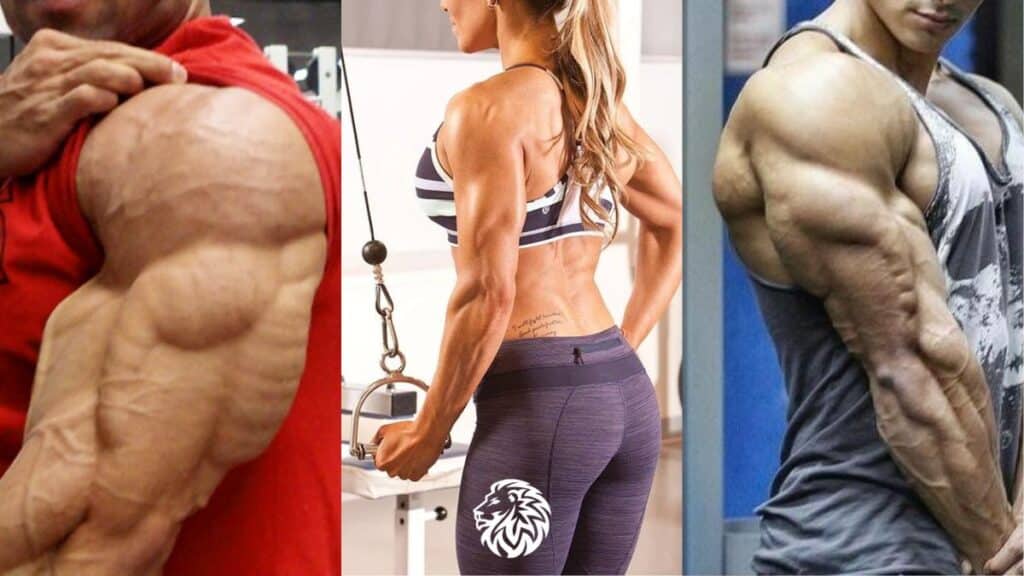
Stressing the Importance of Gradual Progression and Patience
- Embracing Slow and Steady Gains:
- Understanding that muscle development is a gradual process and appreciating small increments in strength and size.
- Recognizing the value of consistency: Ensuring regular, systematic training is more beneficial than sporadic, intense sessions.
- Avoiding Rushed Progression:
- Highlighting the risks of advancing too quickly in weights or intensity, which could lead to injury or burnout.
- Implementing gradual increases in load and volume to allow the muscles and joints to adapt safely.
Advice on Overcoming Plateaus in Muscle Development
- Identifying Plateaus:
- Learning to recognize signs of a plateau, such as stagnation in strength gains or muscle growth despite consistent training.
- Employing methods like tracking workout performance and taking regular measurements to accurately assess progress.
- Strategies to Move Past Stagnation:
- Considering adjustments in volume, intensity, or exercise selection to provide novel stimuli to the muscles.
- Introducing periodization: Systematically varying workout parameters over time to continually challenge the triceps and spur development.
Addressing Common Issues and Challenges in Tricep Training
- Dealing with Elbow Pain or Strain:
- Understanding the potential causes of elbow issues, such as form errors or overuse, and ways to mitigate them.
- Employing preventative measures like ensuring proper warm-up, adhering to good form, and incorporating exercises to strengthen surrounding muscles.
- Balancing Aesthetic and Functional Goals:
- Recognizing that while certain exercises may target visible parts of the triceps, all heads and associated muscles need attention for balanced development and function.
- Ensuring varied exercise selection that includes movements targeting all aspects of the triceps to promote holistic development.
- Managing Expectations and Comparisons:
- Highlighting the influence of genetics on muscle shape and development, and the importance of training for personal progress rather than comparison.
- Encouraging a focus on individualized goals and measurable improvements to foster motivation and satisfaction in the training journey.
Incorporating these additional tips ensures that the journey to robust tricep development is not only effective but also sustainable and enjoyable. By attending to gradual progression, strategically navigating plateaus, and addressing common challenges with informed approaches, the pathway to strong, well-developed triceps becomes clear and attainable. Combining these insights with the exercises and planning strategies outlined in previous sections offers a comprehensive guide for anyone aiming to enhance their tricep strength and aesthetics in a balanced and health-conscious manner.
Conclusion
In our exploration of tricep development, we’ve navigated through five potent exercises: tricep dips, skull crushers, close-grip bench press, tricep kickbacks, and overhead tricep extensions, each providing unique stimuli and benefits for robust tricep growth. Simultaneously, we’ve underscored the pivotal role of understanding the anatomy and the foundational training principles crucial for sculpting powerful arms, emphasizing the synergy between targeted exercise, structured scheduling, and adept manipulation of volume and intensity.
Your journey toward well-developed, strong arms is one that demands consistency and dedication. Remember that progression in muscle strength and size is a cumulative endeavor – every workout counts, contributing to gradual changes and improvements over time. Celebrate the small victories along the way, whether they manifest as an extra rep, improved form, or enhanced muscular endurance, and allow these triumphs to fuel your ongoing commitment to your tricep training journey.
Lastly, while pursuing stronger, more defined triceps, prioritizing form and safety is paramount. Achieving your goals should never compromise your physical well-being. Ensure that every rep is performed with meticulous attention to technique, that every set respects your current capabilities, and every workout is underpinned by a commitment to nurturing your body. By fostering an environment where safety and form are paramount, you pave the way for sustainable muscle building, allowing you to enjoy the fruits of your labor not just momentarily, but in a lasting, health-affirming way.
In the arena of tricep training and beyond, may your efforts be informed, your progress be steady, and your journey be rewarding. Here’s to powerful, strong arms that serve you well in both function and form, today and in the many active days to come.
References and Further Reading
- Spruce, M. (n.d.). Most effective triceps exercises. Verywell Fit. Retrieved from https://www.verywellfit.com/most-effective-triceps-exercises-1231027
- Bodybuilding.com. (n.d.). The 10 best muscle-building triceps exercises! Bodybuilding.com. Retrieved from https://www.bodybuilding.com/content/the-10-best-muscle-building-triceps-exercises.html
- Men’s Health. (n.d.). The best tricep workouts and exercises for men. Men’s Health. Retrieved from https://www.menshealth.com/fitness/g19547150/best-tricep-workouts/
- Men’s Journal. (n.d.). 15 best tricep exercises and workouts of all time. Men’s Journal. Retrieved from https://www.mensjournal.com/health-fitness/15-best-tricep-exercises-and-workouts-of-all-time-mens-journal
- SELF. (n.d.). The best triceps exercises. SELF. Retrieved from https://www.self.com/gallery/best-triceps-exercises
- Muscle & Strength. (n.d.). Triceps exercises. Muscle and Strength. Retrieved from https://www.muscleandstrength.com/exercises/triceps
- Everyday Health. (n.d.). Top exercises for stronger triceps. Everyday Health. Retrieved from https://www.everydayhealth.com/fitness/top-exercises-for-stronger-triceps/
